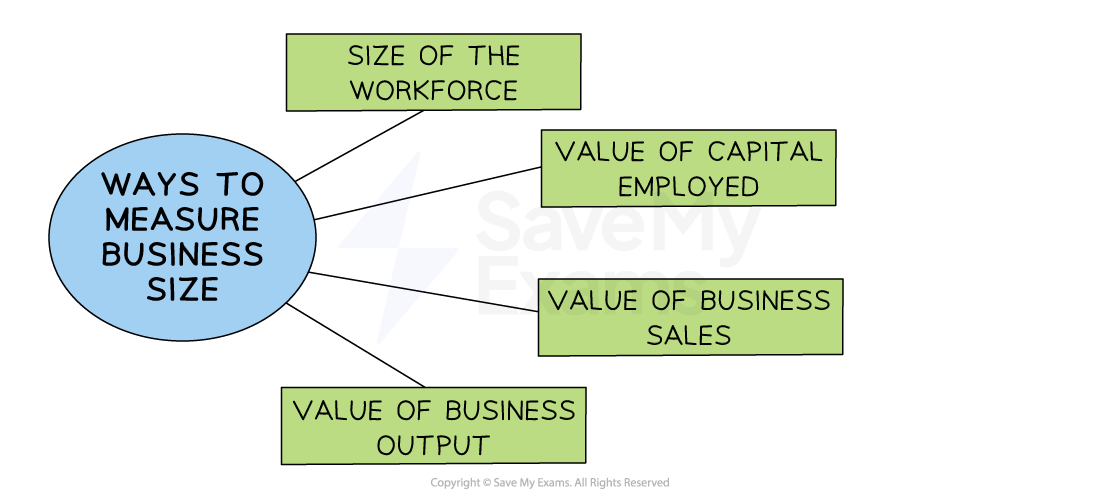Syllabus Edition
First teaching 2025
First exams 2027
Measuring Business Size (Cambridge (CIE) IGCSE Business): Revision Note
Exam code: 0450, 0986 & 0264, 0774
Methods of measuring business size
A simple way to classify businesses is to consider their size

Size of the workforce
A measure of how many workers are in the business
Small and medium-sized businesses (SMEs) employ less than 250 employees
Large businesses have 250 or more employees
Value of capital employed by the business
Capital employed is a measure of all the capital (money, equipment, buildings) that is currently invested in a business
Value of business sales
The total sales revenue achieved during a trading period
It is calculated using the formula:
The volume of sales can also be used to measure business size
Value of business output
The financial worth of goods produced, even though they may not all be sold
It is calculated using the formula:
The volume of output can also be used to measure business size
Case Study
Comparing business size
Company | Size of the workforce | Capital employed | Value of output |
|---|---|---|---|
Futuristic Microchips |
|
|
|
Tasty Satsumas |
|
|
|
Futuristic Microchips is the largest organisation using the measures of number of employees and capital employed
Tasty Satsumas is the same size as Futuristic Microchips in terms of the value of output
Problems when measuring business size
Each method of measuring business size has significant limitations
Limitations of measures of business size
Method | Limitations |
|---|---|
Size of the workforce |
|
Value of capital employed |
|
Value of sales |
|
Value of output |
|
Examiner Tips and Tricks
Remember, profit is not a method of measuring business size. Stick to recognised measures such as number of employees, value of output/sales, or capital employed

Unlock more, it's free!
Did this page help you?